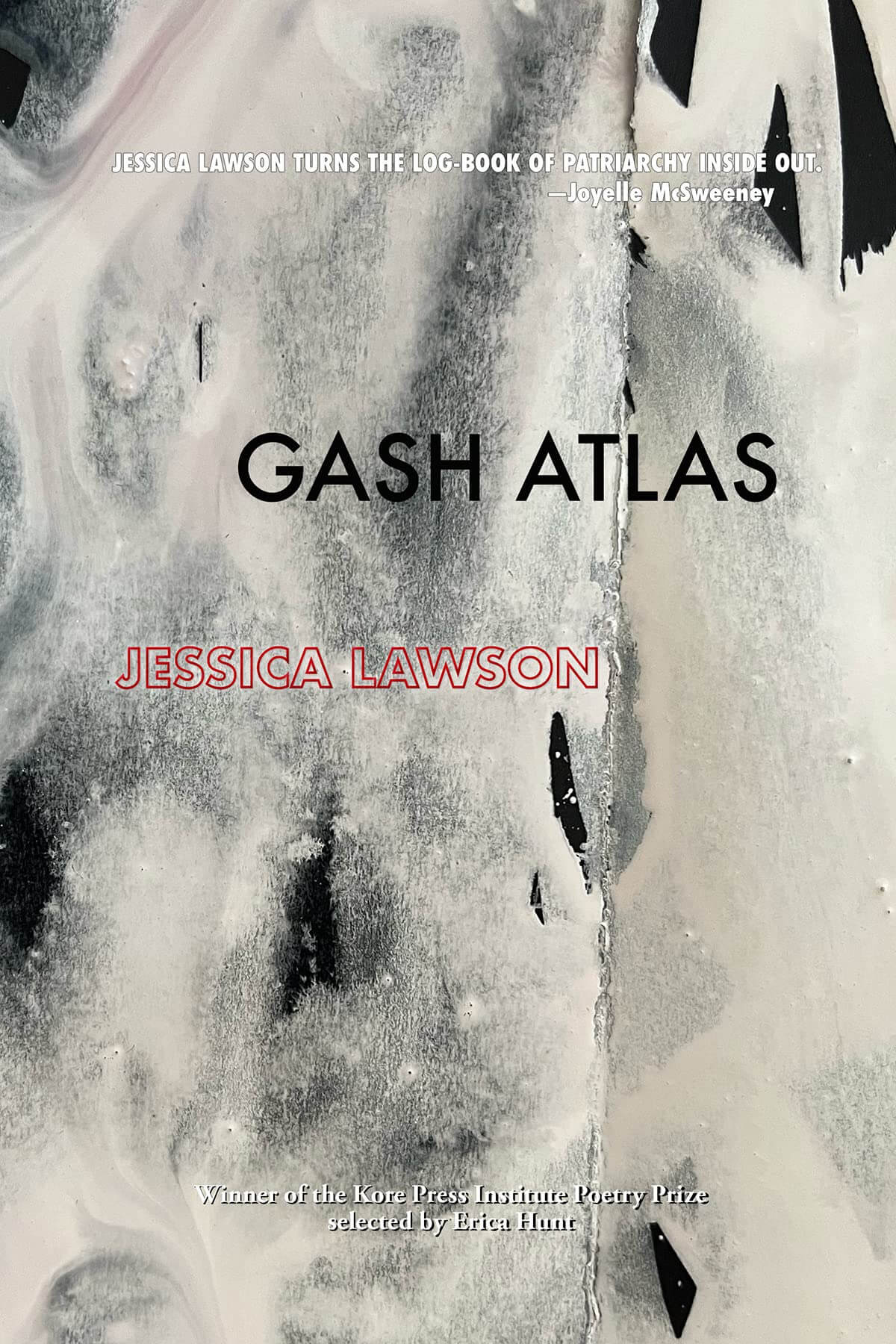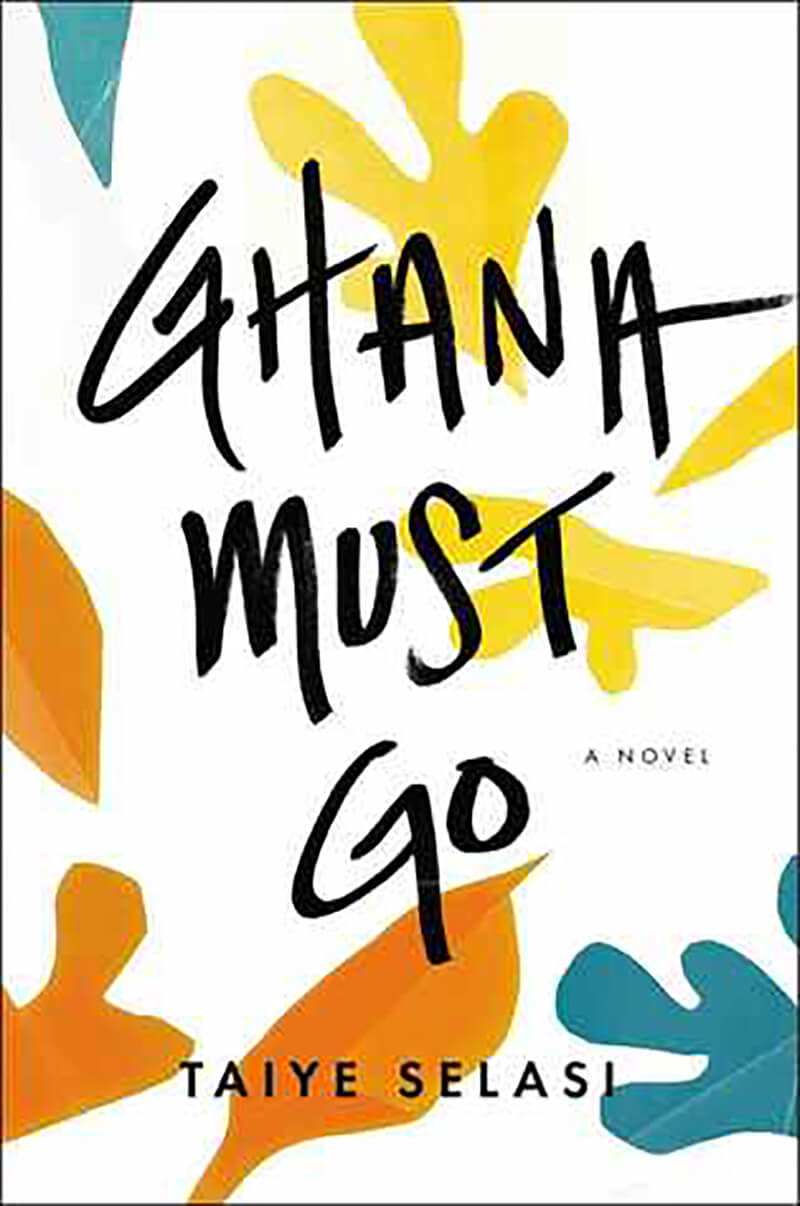
Review
Gash Atlas
by Jessica Lawson
Kore Press
ISBN: 978-1888553802
Review by Alex Carrigan
It’s fairly safe to say that Christopher Columbus ruined the world. The voyage to the New World resulted in colonization, slave trading, and various crimes against humanity that were glossed over when presenting Columbus as this great navigator and adventurer. While the mythos surrounding Columbus has begun facing heavy criticism and reanalysis in the last few decades, it’s in trying to fully understand the greater scope of the man that asks one to examine just how widespread his impact has been over the last 500-plus years.
Jessica Lawson’s poetry book Gash Atlas serves as a serious deconstruction of the Columbus figure through the lens of a queer, white, single mother. Lawson’s collection is an atlas of abuse and power, with many of the poems in her book serving as “maps” of various institutional forms of violence and terror imposed on marginalized individuals.
Through her mix of blunt and critical poetry and surreal, imagined conversations with the explorer, Lawson’s book takes the idea of Columbus and transposes him into many scenarios of people using the power and control they wield for wretched purposes.
While called an atlas, Lawson’s book is much more difficult to navigate than “sail West, see where it takes you.” The collection is divided into five parts, each examining abuse in various formats. The first section, “Words for Holes,” creates maps out of openings and voids. In this section, Columbus first emerges as a sexual and violent character in positions like a job interviewer or a police officer. Many of these poems are written like screenplays. For example, in ‘Christopher Columbus Pulls Me Over,” Lawson writes,
“ME: Who seems to be the problem officer?
(It is dark and I am afraid)
CHRISTOPHER COLUMBUS: License and resignation please.
(he sees I am afraid so it is dark)”
These poems demonstrate the creative form that the rest of the collection will feature. Lawson plays with space in her poems, adding large breaks between stanzas, lines, and shapes. Part One ends with a series of “Lack Maps,” each with a diagonal line splitting the piece and breaking up how one could read the lines.
As the collection progresses, Lawson continues to experiment and explore these maps in ways that show just how far-reaching the effect of Columbus is. Many poems reference the Daphne myth, a tale of a woman avoiding a powerful man’s attempt to possess her by giving up her form and becoming a laurel tree. Pieces in the second section also address this violence and control of the body, such as in “Christopher Columbus Teaches Me to Go Down,” where what should be an act of passion and love is turned into the disturbing and grotesque.
By the third section, Lawson’s poetry begins to turn toward the more personal. Pieces in this section are more anecdotal, and a few involve Lawson as a white mother raising children of color. In “The Murderers,” a poem written following a news report of a white lesbian couple driving a car with their six adopted black children off a cliff, speaks to many of Lawson’s fears, writing,
“I am afraid of white mothers who overshare
their Black children as if their Blackness
makes mothers owning them my children are
Black children of a white mother who shares this
fear with you now…”
This section and the final two sections are also where the book goes full throttle into the experimental. Pieces throughout involve blacked-out borrowed text, but it’s here that Lawson presents artistic poems and collage pictures. Phrases like “Invisible is a muscle that stretches us open for you,” can be found, while others appear to be destructions and erasures of Lawson’s poetry. The final section is one long piece where Lawson counts down acts of violence and where the cycle of violence against her originated. For example, she writes,
“When I was twenty-eight and thirty-two and gave birth and did not die, Christopher Columbus spilled himself from my dry lips to whisper spells of safety. This body hosed the sheets with my blood to celebrate the surety of its white survival. I name a pain and he maps its location. He calls all of his legends simply luck.”
Gash Atlas is a disorienting and difficult exploration of the paths of abuse and violence that have permeated the western world for centuries. Lawson’s experimental style reveals how twisted and difficult it is to truly find the origins of pain and torment, and how one can try to navigate through it. It’s a siren call to wreck the ships of those who invade one’s safety and security, and Lawson’s voice is quite enticing when you see how cleverly constructed it all is.
About the Author
 Alex Carrigan (he/him) is an editor, poet, and critic from Virginia. He is the author of May All Our Pain Be Champagne: A Collection of Real Housewives Twitter Poetry (Alien Buddha Press, 2022). He has had fiction, poetry, and literary reviews published in Quail Bell Magazine, Lambda Literary Review, Empty Mirror, Gertrude Press, Quarterly West, Barrelhouse, Stories About Penises (Guts Publishing, 2019), Closet Cases: Queers on What We Wear (Et Alia Press, 2020), and more. He is also the co-editor of Please Welcome to the Stage…: A Drag Literary Anthology with House of Lobsters Literary. For more information, visit https://carriganak.wordpress.com/ or follow him on Twitter @carriganak.
Alex Carrigan (he/him) is an editor, poet, and critic from Virginia. He is the author of May All Our Pain Be Champagne: A Collection of Real Housewives Twitter Poetry (Alien Buddha Press, 2022). He has had fiction, poetry, and literary reviews published in Quail Bell Magazine, Lambda Literary Review, Empty Mirror, Gertrude Press, Quarterly West, Barrelhouse, Stories About Penises (Guts Publishing, 2019), Closet Cases: Queers on What We Wear (Et Alia Press, 2020), and more. He is also the co-editor of Please Welcome to the Stage…: A Drag Literary Anthology with House of Lobsters Literary. For more information, visit https://carriganak.wordpress.com/ or follow him on Twitter @carriganak.



